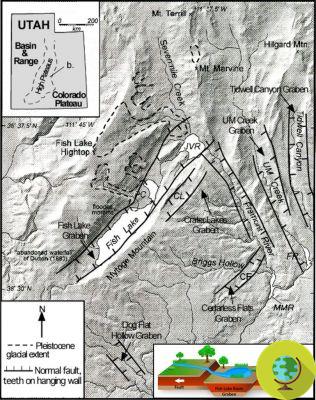The largest living organism in the world, Pando, is in danger of dying from climate change after having lived for millennia
The largest living organism in the world, renamed Pando, is in danger of dying from climate change, after having lived for millennia
In Utah, western United States, near a lake fed by a spring, inhabits a single giant organism that alone constitutes an ecosystem on which plants and animals have relied on for thousands of years - it is called Pando, extends for about 40 hectares and is dying because of man. It would seem a forest made up of single trees, but in reality it is a single network of interconnected roots that give life to about 47.000 identical stems, characterized by a white bark and very small leaves.
It is not surprising that these trees (called Aspen trees) create clones that are all the same: in North America there are various examples of clonal stands like this one, the size of a few hectares. What is surprising about Pando is its enormous size, which makes it the largest living organism in the world. In addition to being the largest, Pando is also the longest-lived: it has existed for thousands of years (scientists assume about 14.000 years), although the stems have an average lifespan of 130 years before being replaced with new ones. It is therefore a vast ecosystem, enriched by 68 species of different plants and many species of animals that have followed one another over the millennia until today.

Pando's location and extent (@ FriendsOfPando)
But unfortunately, Pando's end may be very near - despite the fact that this organization enjoys the protection of the United States Forest Service. The most important threat is represented by the animals - mainly deer and moose - that graze in the area: when the older stems die and fall, sunlight reaches the ground stimulating the birth of new clonal stems, which are soon eaten by the animals - with the evident loss of the number of stems present. To limit this phenomenon, an area of Pando has been forbidden to graze animals: this should favor a more luxuriant growth of the new stems. In addition to the presence of the animals, there are three diseases (cancer of the sooty bark, leaf spot and fungal disease of the conk) which weaken the adult stems until they break down.
Certainly the greatest threat is represented by the climate change of anthropogenic origin: Since its inception, Pando has had to deal with a substantially stable climate, and the warming it is subjected to now threatens to kill it. Although there are still no scientific studies focused specifically on Pando, it is easy to imagine that drought, summer fires, scarcity of water and too hot weather make the life of the stems very difficult and the growth of new leaves almost impossible.
All is not lost yet, however. Given his incredible longevity, we know that Pando is very resilient: he survived the arrival of European settlers, faced disease, fires and mistreatment by humans. There is hope that scientists can find a solution to protect it and hand it over intact (or almost) to future generations.
Follow your Telegram | Instagram | Facebook | TikTok | Youtube
Source: Friends of Pando
We also recommend:
- Pando, we are killing one of the largest living organisms on the planet
- We are destroying plant and animal species at a rate 1.000 times faster than the natural rate
- Ten UNESCO heritage forests emit more CO2 than they can absorb. The report


























